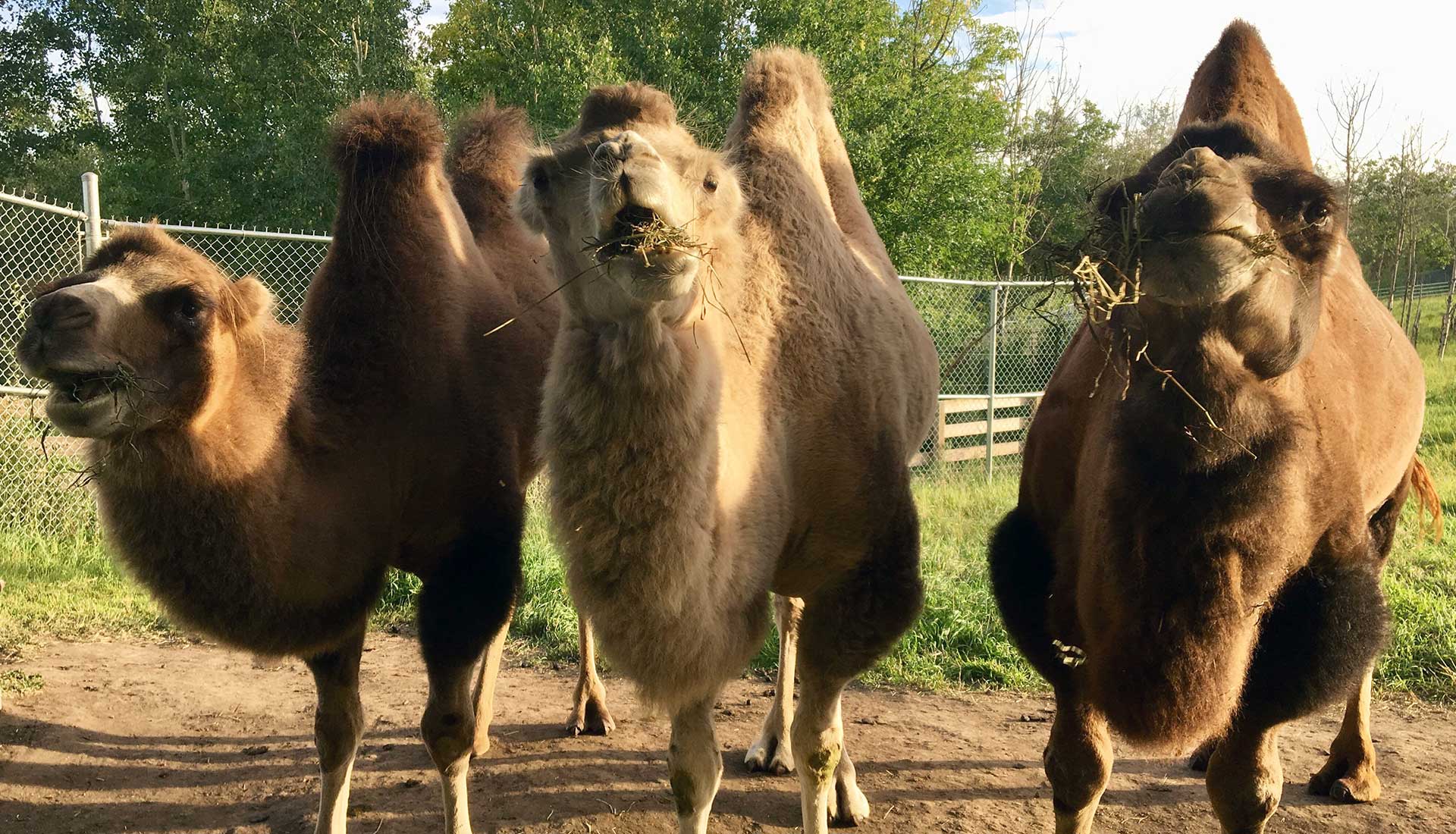
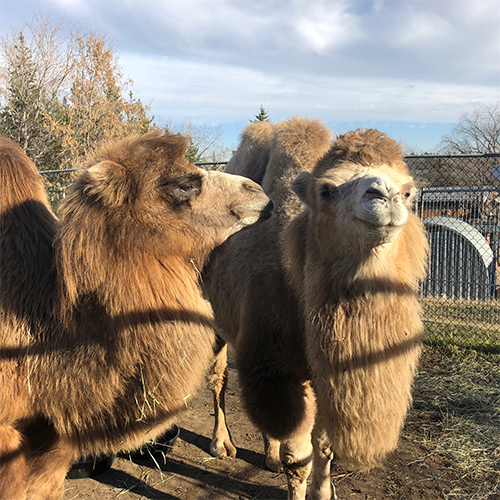
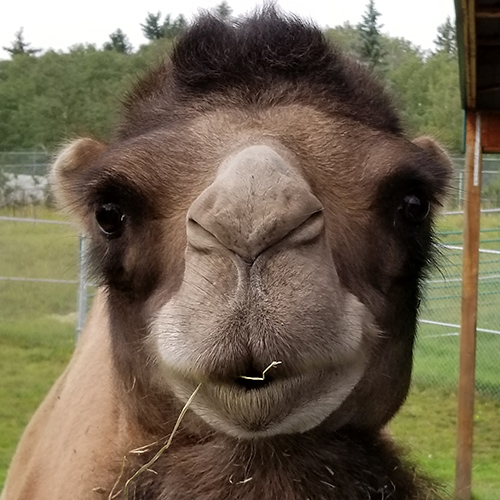
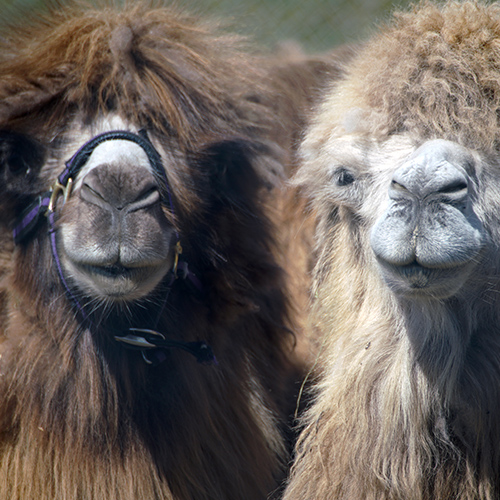
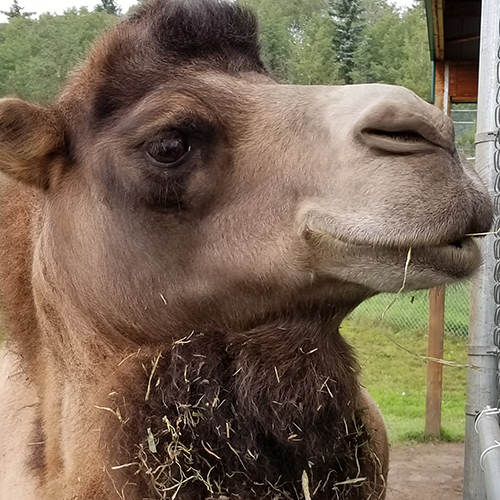
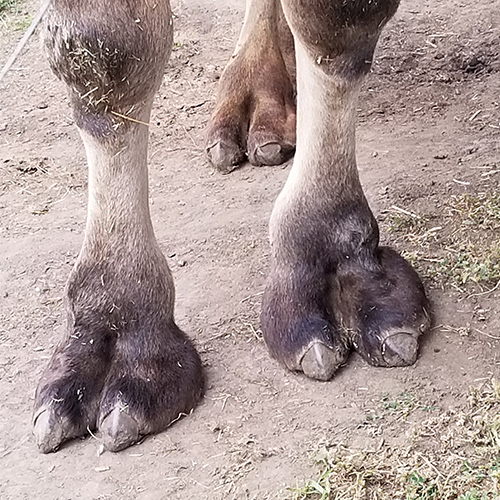
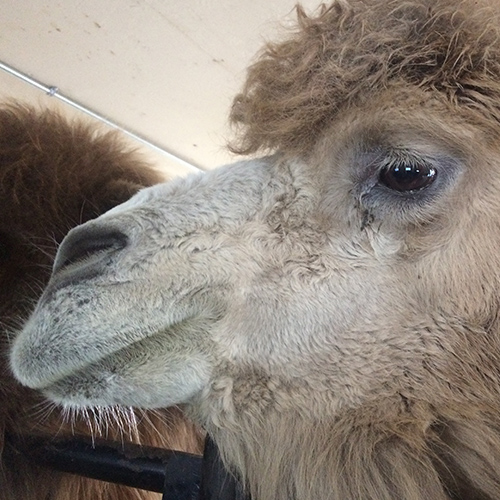




Camels are adapted for a life of extremes. In addition to a long, shaggy coat that protects them in winter and sheds in summer, camels rarely sweat which helps them conserve fluids over a long period of time. Their nostrils close to keep sand out while bushy eyebrows and two rows of long eyelashes protect their eyes. Camels have flat foot pads with undivided soles that can spread widely to walk on rocky terrain and desert sands.
The Edmonton Valley Zoo is home to three Bactrian camels: a six-year-old male named Genghis, and two females – three-year-old Marshmallow and four-year-old Dolly.


